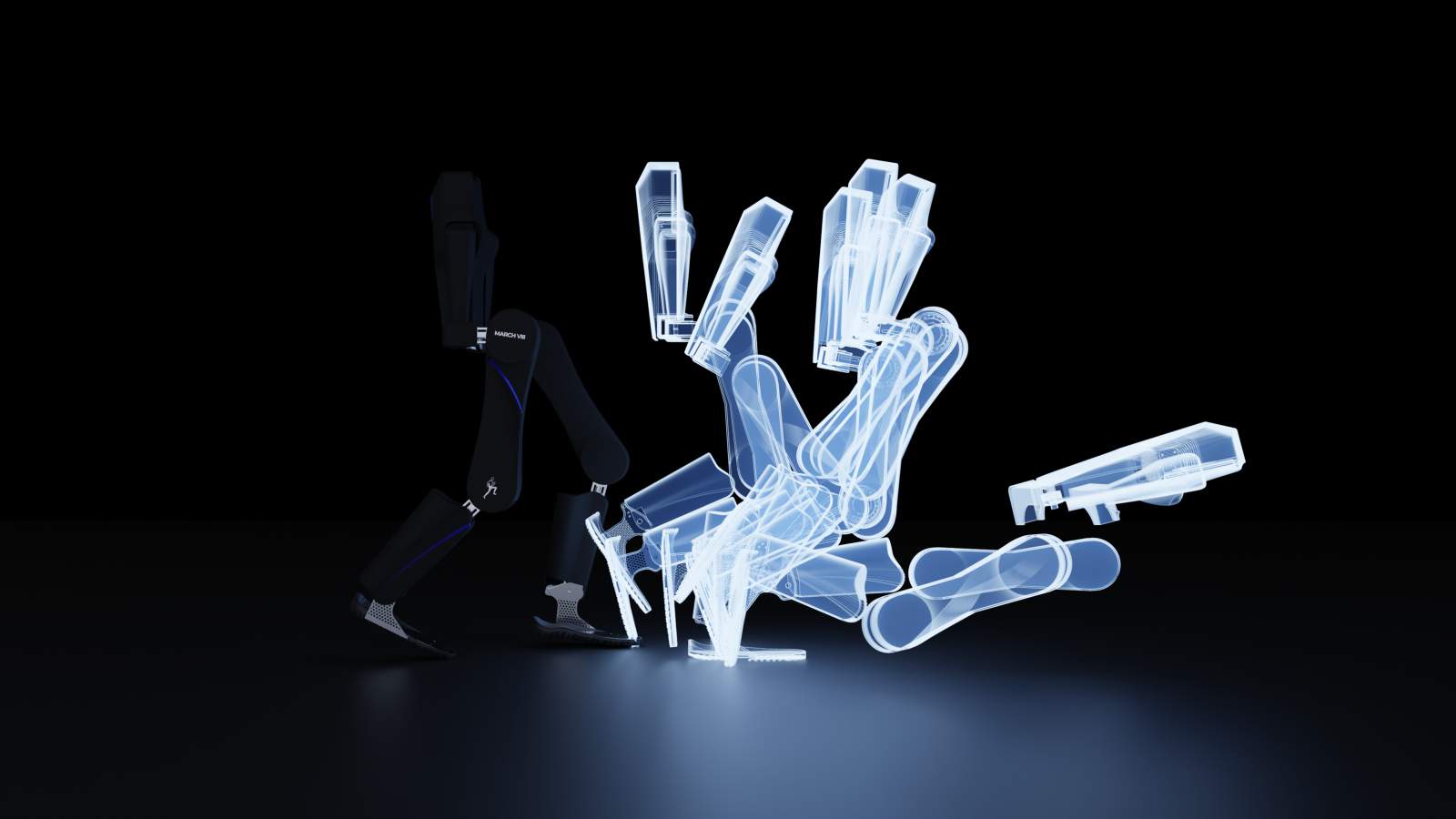Delft students are building an exoskeleton that balances itself. The driver no longer needs crutches. A promising development that could improve the lives of paraplegic patients.
An exoskeleton is a robotic harness that can enable people with spinal cord injuries, for example, to stand and walk again. Both scientific institutes and commercial companies have been researching this device for years. The exoskeleton is now already a regular part of rehabilitation programs. "But so much more is still possible. We are committed to that," says Wendel Postma, Chief Engineer of the student team Project MARCH. For people who can no longer use their lower body properly for whatever reason, an exoskeleton can greatly improve their quality of life.
Student team Project MARCH is a group of students from the Delft University of Technology. The team pushes the boundaries of technology every year. "We set the bar very high. This year we are focusing entirely on balancing the exoskeleton. Not much research has been done on that in the past, mainly because it is technically challenging," Postma says.
Measuring and predicting movement
Keeping balance has to do with both the mechanical development and the software of an exoskeleton. "Inside the exoskeleton and on the pilot's chest are several sensors. Using this data, the software can determine proper balance," explains Joy Brand, Chief Software & Data Analyst at Project MARCH.
In addition, the team uses predictive algorithms to determine future movements. "In this way, the software plots a path most favorable to balance. This also takes into account the pilot's movements," she continues. That sounds simple, but it is anything but. "We get help from Ph.D. students, for example, who do research on bipedal robots. But it remains a big challenge," Postma adds.
Refined motor skills
The team also made mechanical improvements to the exoskeleton to ensure balance. Postma: "We improved the motors and the spindles (comparable to the gearbox of a car, ed.). These can now respond faster and better. So the exoskeleton can correct movements better and more accurately to stay balanced."
As a result of these modifications, the exoskeleton has more refined motor skills that come close to human movements. After all, our feet don't just make big, firm strides either. Sometimes a small - almost invisible - movement of a toe is enough to restore balance. "To make this also possible in an exoskeleton, we measure, among other things, the force with which the exoskeleton pushes on the ground. Then you also know what force you have to counteract to keep a good balance," he explains.
Optimal cooperation
The software and mechanical elements must be optimally connected for the best results. For now, that is the students' main goal. The members of a student team change every year. Each group chooses a different technical challenge and a corresponding goal. "Of course, we can build on what the teams have done before us," Brand said.
In addition to the great challenge of balancing, this year's team is also moving forward with the development of a brain-controlled exoskeleton. The pilot's brain waves will be measured and thus he can make the exoskeleton run or stop without pressing a button. "This way we are getting closer and closer to an optimal user experience of the exoskeleton," says Postma.
Extreme technological challenge
Extreme technological challenges belong to the student team. "We take up the challenge and by doing so we want to show the market what is possible. Ultimately, of course, we hope that the market will pick it up further. In this way, together we can ensure that people with spinal cord injury can stand and walk again," says the Chief Engineer. That gives paraplegic patients freedom of movement. It also provides opportunities to communicate with others again at eye level, which is often of great emotional value.
Students have a unique position in the landscape of technology development. As a student team, they often receive support from scientists and work together with companies. They are totally committed to technology and the innovation process. Project MARCH is part of the D:DREAM hall, a large workshop with offices on the TU Delft campus. This is where
